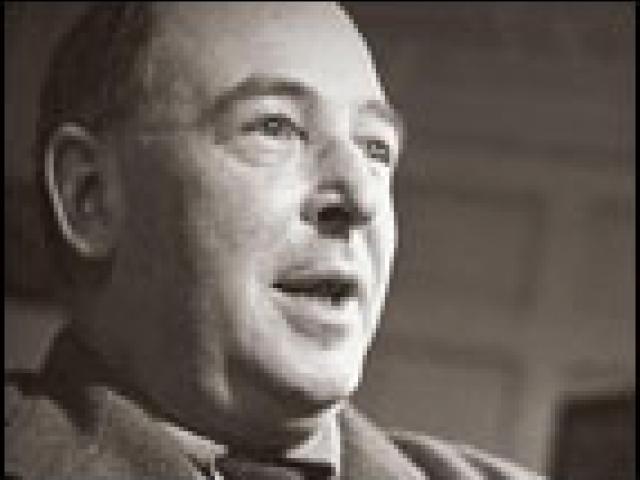The Calling of Christian Writers

Ask your neighbors for an off-the-cuff reaction to the words “Christian literature” and you’re likely to hear them stumble through a list of belittling adjectives. Despite the swelling ranks of able Christian writers, the reaction demonstrates that we—heirs to the tradition of Chaucer, Milton, and Donne; successors to Tolstoy, Dostoyevsky, and Chekov; the literary descendants of G.K. Chesterton and Dorothy Sayers, and of J.R.R. Tolkien and C.S. Lewis, and of Flannery O’Connor and Walker Percy—are now viewed as an inconsequential presence in the world of literature.
We have, volitionally, banished ourselves to the “inspiration” section at the back of Barnes & Noble. And by doing so, we may have abandoned our neighbors and left literature in the hands of writers who’d leave them hopeless.
All the names just mentioned were, of course, great writers because of their Christian faith, not in spite of it. They appreciated the inherent goodness of God’s creation; they knew the pervasive consequences of mankind’s Fall; they relished the hope of Christ’s resurrection, and anticipated the day of His cosmic-wide redemption. They combined talent with an irresistible urge to tell stories, and then—armed with this gripping a worldview—they made sense of a seemingly pointless world. Their books and poems provided eternal significance to the mundane; they held out hope while never flinching from the cold, hard truth of life in a sin-afflicted world. As a result, their works are appreciated today across the entire breadth of our literary culture.
Dorothy Sayers took the lightly regarded “detective novel” and transformed it … to illustrate the conflict between sin and Christian virtue.
Beowulf, for example, after 1,300 years, is still required reading on college campuses, and still deemed essential to the education of well-rounded students. Writer and teacher Donald Williams, in his essay Christian Poetics, Past and Present, explains how the poet wrestled with the tension between his Christian faith and Teutonic heritage. He made this grand synthesis, Williams says, “in which the heroic ideal was enlisted in a cosmic war of good and evil.” Williams also reminds us that Dante, in The Divine Comedy, “created concrete images that allegorically incarnated Christian doctrines ….” And that Chaucer gave us a “humane and sympathetic portrait of God’s plenty.”
Transforming the Detective Story
Dorothy Sayers’ work is more recent, and much more accessible. Between 1923 and 1935 Sayers wrote 11 Peter Wimsey detective stories. A savvy and gifted believer, Sayers elevated the genre. She took the lightly regarded “detective novel” and transformed it, employing who-done-it plots and a recurring cast of characters to illustrate the conflict between sin and Christian virtue, and to show readers how, at least from man’s perspective, evil might be restrained but never ended.
Sayers wrote the most popular sort of fiction. Believers and non-believers anticipated each new installment, and her stories today, some 70 years after they were written, are still available at Barnes & Noble. And they still depict, as author Joyce Brown, puts it, “… the horror and irrevocability of evil and the power of virtue, which relentlessly battles against it.”
Perceiving Life Through the Central Christian Mystery
Twenty years later Flannery O’Connor, with the wit she was known for, addressed the tension that confronts contemporary Christian writers. There was an assumption, O’Connor noted, that Christians should write for only one reason: “… to prove the truth of the Faith.” When pressured to tame her “grotesque” characters and to sanitize her Southern, gothic fiction, O’Connor balked. She’d seen the sentimental drift in Christian writing; it was, she said, “… a distortion that overemphasized innocence.” And innocence, when exaggerated in a fallen world, not only mocked the true state of man and society, but the price that was paid for their redemption.
Writers must learn, “to be humble in the face of what-is,” O’Connor argued. They must understand that concrete reality—the things we see, hear, taste, smell, and touch—are the only clay a novelist can mold. They aren’t to persuade with argument or develop abstract theories or disguise essays in the garb of story. Rather, they’re to create characters, invent action and dialog, and concoct settings that look a lot like the places we know. If the novelist’s work is to ever transcend the here-and-now, O’Connor said, it must be firmly rooted in it.
O’Connor griped that Christian writers tended to be concerned with “unfleshed ideas and emotions.” They’re reformers, she complained, who “… are possessed not by a story but by the bare bones of some abstract notion. They are conscious of problems, not of people, of questions and issues, not of the texture of existence, …of everything that has a sociological smack, instead of with all those concrete details of life that make actual the mystery of our position on earth.”
That mystery, underscored for her by life in the “Christ-haunted South,” was the theme she couldn’t escape. The Christian writer, O’Connor explained, perceives life from the “standpoint of the central Christian mystery: that is has, for all its horror, been found by God to be worth dying for.” This, she knew—when understood and applied—expanded the writer’s vision. It inspired investigation. It meant that nothing is off limits. And that everything—regardless of how common—matters.
O’Connor—because she was a Christian, because she was concerned about her vocation, and because she knew the world and the Church looked on warily—cared about quality. A Christian’s novel, she said, must be “complete and self-sufficient and impregnable in [its] own right.” When told that good Catholics, because they were responsible for proclaiming the gospel, couldn’t also be good artists, she replied “ruefully” that, “because I am a Catholic, I cannot afford to be less than an artist.”
An Imagination Sent Soaring by the Gospel
C.S. Lewis, a contemporary of O’Connor’s, was as gritty a realist as she was. And yet our neighbors—practically all of them, regardless of their religious beliefs or affiliation—love his fantasy. The genre might have been his natural, literary inclination. George Sayer, in his biography Jack: A Life of C.S. Lewis, notes that Lewis’s most “precious moments” were when he was aware of the supernatural’s intrusion into the workaday world. “His success in translating these moments into his fairy stories gives [The Chronicles of Narnia] a haunting appeal,” Sayer wrote, providing readers with “a taste of the other.”
When Lewis wrote The Chronicles of Narnia, he had no theological agenda. There was no ulterior, evangelistic motive; he simply hoped to create likable stories. But the man’s worldview was as elemental to him as blood and bone. And his characters, plots, symbols, and themes are—unavoidably—products of it. Which explains why, in The Magician’s Nephew, we see the story of Creation (Aslan sings it into creation). We see temptation in the Garden and the Fall. And in the story that followed, death, judgment, Hell, and Heaven all enter the pages of Lewis’s fantasy.
“The figure of Aslan tells us more of how Lewis understood the nature of God than anything else he wrote.”
Lewis wasn’t smuggling Christian theology into the minds of young readers, it just seeped through; it poured out of the man and onto the page, likely causing the claims of Christianity to ring true when readers later met them.
Lewis, of course, wrote theological classics: Mere Christianity, The Four Loves, The Problem of Pain, Til We Have Faces, The Weight of Glory …. Yet, his biographer says, it was the Narnia stories—the fantasies that our un-believing neighbors love—that most clearly reveal Lewis’s theology. The character of Aslan—the Lion who is known to nearly every kid on every block of the English-speaking world—is, George Sayer says, Lewis’s supreme achievement.
Sayer quotes the late monk Bede Griffiths, who said: “The figure of Aslan tells us more of how Lewis understood the nature of God than anything else he wrote. It has all the hidden power of majesty and awesomeness which Lewis associated with God, but also all the glory and the tenderness and even the humor which he believed belonged to him, so that children could run up to him and throw their arms around him and kiss him. There is nothing of ‘dark imagination’ or fears of devils and hell in this.” It is, Griffiths said, “mere Christianity.”
The Chronicles of Narnia, written from 1950 to 1956, remain popular, and fully stocked in every Borders bookstore. And yet these popular stories, because they’re the products of a mind steeped in Scripture, because they’re the fruit of an imagination sent soaring by the Christian gospel, cannot help but be Christian. Lewis and his friend J.R.R. Tolkien, the author of the Lord of the Rings, have charmed millions with stories that are full of wonder, and profoundly biblical.
Art that Takes Shape in the Christian Mind is Different
Lewis, O’Connor, and Sayers personify the thoughts once espoused by Catholic philosopher Jacques Maritain. In 1974, in Art and Scholasticism, Maritain said, “Christian art is defined by the one in whom it exists and by the spirit from which it issues.” If you want to make Christian art, Maritain exhorted his audience, then simply be Christian and “…make a beautiful work.” He told aspiring novelists to “be fully an artist,” because, “the artist and the Christian are one …” and art that takes shapes in the Christian mind is different from the art that doesn’t.
This reality—that all writers express their worldview—was apparent to Walker Percy. The author of respected literary fiction—The Moviegoer, The Last Gentleman, Love in the Ruins … once told an interviewer that, “… as a writer, you have a certain view of man, a certain view of the way [the world] is, and even if you don’t recognize it or even if you disavow such a view you can’t escape [it].” Percy readily acknowledged that his own critically acclaimed novels, which routinely depicted man “as pilgrim, in transit, in journey…reflected a certain basic orientation toward … Catholic dogma.”
Like O’Connor, Percy saw his faith as a literary advantage. It was a way of seeing the world and a system for making sense of it. Christianity gave his stories texture and meaning. Even today, they strike a familiar chord—which is why his books are next to O’Connor’s at your nearest Books-A-Million.
For Marilynne Robinson, There’s Only Respect for a Great Writer
Any list of the last century’s great writers includes O’Connor, Percy, Graham Greene, and Wendell Berry—all Christian, all gifted, and all of them an influential voice in the wider culture. Berry, now in his mid-seventies, remains formidable, still writing and speaking on environmental and agricultural issues.
Beyond him, the list of today’s best-known Christian writers includes John Grisham, Jan Karon, Bret Lott—and, course, Marilynne Robinson, the 2005 Pulitzer Prize winner (for Gilead). It’s no surprise that Robinson, when she talks about faith and vocation, echoes those who came before her. In a recent discussion with Katherine Lanpher, a Barnes & Noble interviewer, Robinson said that, “… There’s a theological [undercurrent] to everything I write.”
Lanpher pressed her, asking, “How does writing lend itself to a life of faith?”
“I’ve never found them to be incompatible ….” Robinson replied. “Frankly, historically speaking, a great deal of English language literature is generated directly out of religious thought and religious erudition.” Then, with words that bring O’Connor and Percy to mind, she said, “For me, a religious mindset creates a habit of scrupulous inquiry relative to virtually everything ….” She explained to Lanpher that, “… everything has religious significance. It’s not as if I go from one area of interest to another,” she said, “they’re simultaneous for me.”
The conversation later veers down this charming path, as the Pulitzer Prize winning Christian so casually explains to the secular interviewer on a nationally distributed podcast that John Calvin is “… cool in a lot of ways. If you read his sermons on the 10 Commandments,” Robinson explains, “they’re absolutely beautiful, profoundly humane interpretations of things that many people find forbidding.” She continues, talking about how Calvin situated sacred and human experience “in the mind and in perception,” and about how she feels indebted to the 16th century reformer for his understanding of, “… the givenness of everything.”
From Robinson, throughout the whole of the conversation, there’s not a syllable of defensiveness; there’s no awkwardness, no need to shy away from anything she believes. And from Lanpher, there’s only respect for a great writer.
More than 1,600 years ago, Augustine argued that Christians not only had a right to employ “the art of rhetoric,” but also the obligation. Though sometimes skeptical of literature, he recognized that Christians, should they abandon the field, left it open to “those who expounded falsehood.” Browse the shelves at the nearby Borders, and his words ring true.
“Christian fiction”—the books we find in the back of the bookstore—often edify and inspire us. And just as we need composers to create hymns, the church needs writers—novelists and theologians alike—to build up the body, to enhance our worship, to delight us with stories that exemplify the truths of the Christian faith. Still—it may be time to confess that we’ve left literature in the hands of those who have no hope to offer. It might be time to reconsider our neighbors and their need to make sense of the world; their need for books, poems, and short stories that probe life’s mystery, that offer hope without flinching from the Fall’s consequences, that don’t—by their sentimentality—mock our true state, or the price that was paid for the world’s redemption.





